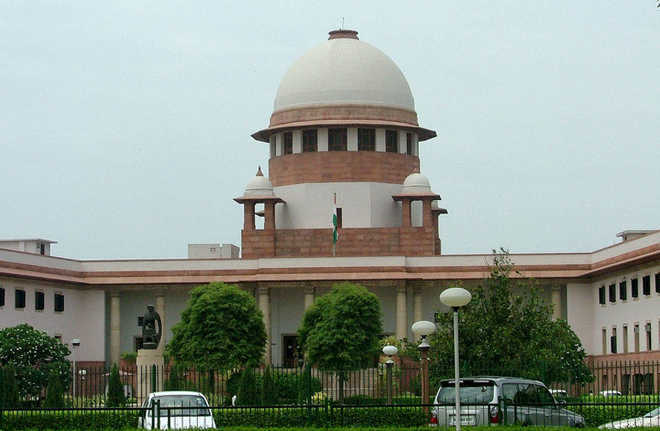Satya Prakash
Tribune News Service
New Delhi, August 24
The Supreme Court’s nine-judge Constitution Bench verdict declaring right to privacy a fundamental right under the Constitution was historic for a unique reason as Justice DY Chandrachud overruled a verdict authored by his father YV Chandrachud in the infamous ADM Jabalpur case during Emergency.
Justice YV Chandrachud, who was part of a five-judge Constitution Bench, had ruled by 4:1 majority on April 28, 1976, that all fundamental rights get suspended during Emergency and individuals did not have a right to approach constitutional courts for protection.
Forty one years on, his son Justice DY Chandrachud overruled the verdict, saying, “The judgments rendered by all the four judges constituting the majority in ADM Jabalpur are seriously flawed.”
Justice Chandrachud was supported by two other judges — Justice RF Nariman and Justice Sanjay Kishan Kaul — who also overruled ADM Jabalpur verdict.
Much of the problems created by the ADM Jabalpur verdict were corrected by the 44th Constitutional Amendment but the formal overruling can be seen as an attempt by the judiciary to counter criticism for its failure to protect citizens’ fundamental rights during the Emergency.
Justice DY Chandrachud went on to justify the minority verdict delivered by Justice Khanna in the case, saying, “The view taken by Justice Khanna must be accepted, and accepted in reverence for the strength of its thoughts and the courage of its convictions.”
Justice Chandrachud said: “Justice Khanna was clearly right in holding that the recognition of the right to life and personal liberty under the Constitution does not denude the existence of that right, apart from it nor can there be a fatuous assumption that in adopting the Constitution the people of India surrendered the most precious aspect of the human persona, namely, life, liberty and freedom to the state on whose mercy these rights would depend.
“Such a construct is contrary to the basic foundation of the rule of law which imposes restraints upon the powers vested in the modern state when it deals with the liberties of the individual. The power of the court to issue a Writ of Habeas Corpus is a precious and undeniable feature of the rule of law,” said Justice DY Chandrachud.
He said: “No civilized state can contemplate an encroachment upon life and personal liberty without the authority of law. Neither life nor liberty is bounty conferred by the state nor does the Constitution create these rights. The right to life has existed even before the advent of the Constitution.
"In recognising the right, the Constitution does not become the sole repository of the right. It would be preposterous to suggest that a democratic Constitution without a Bill of Rights would leave individuals governed by the state without either the existence of the right to live or the means of enforcement of the right. The right to life being inalienable to each individual, it existed prior to the Constitution and continued in force under Article 372 of the Constitution.”
Unlock Exclusive Insights with The Tribune Premium
Take your experience further with Premium access.
Thought-provoking Opinions, Expert Analysis, In-depth Insights and other Member Only Benefits
Already a Member? Sign In Now










